
How to Use Power Inverter: Examples, Pinouts, and Specs
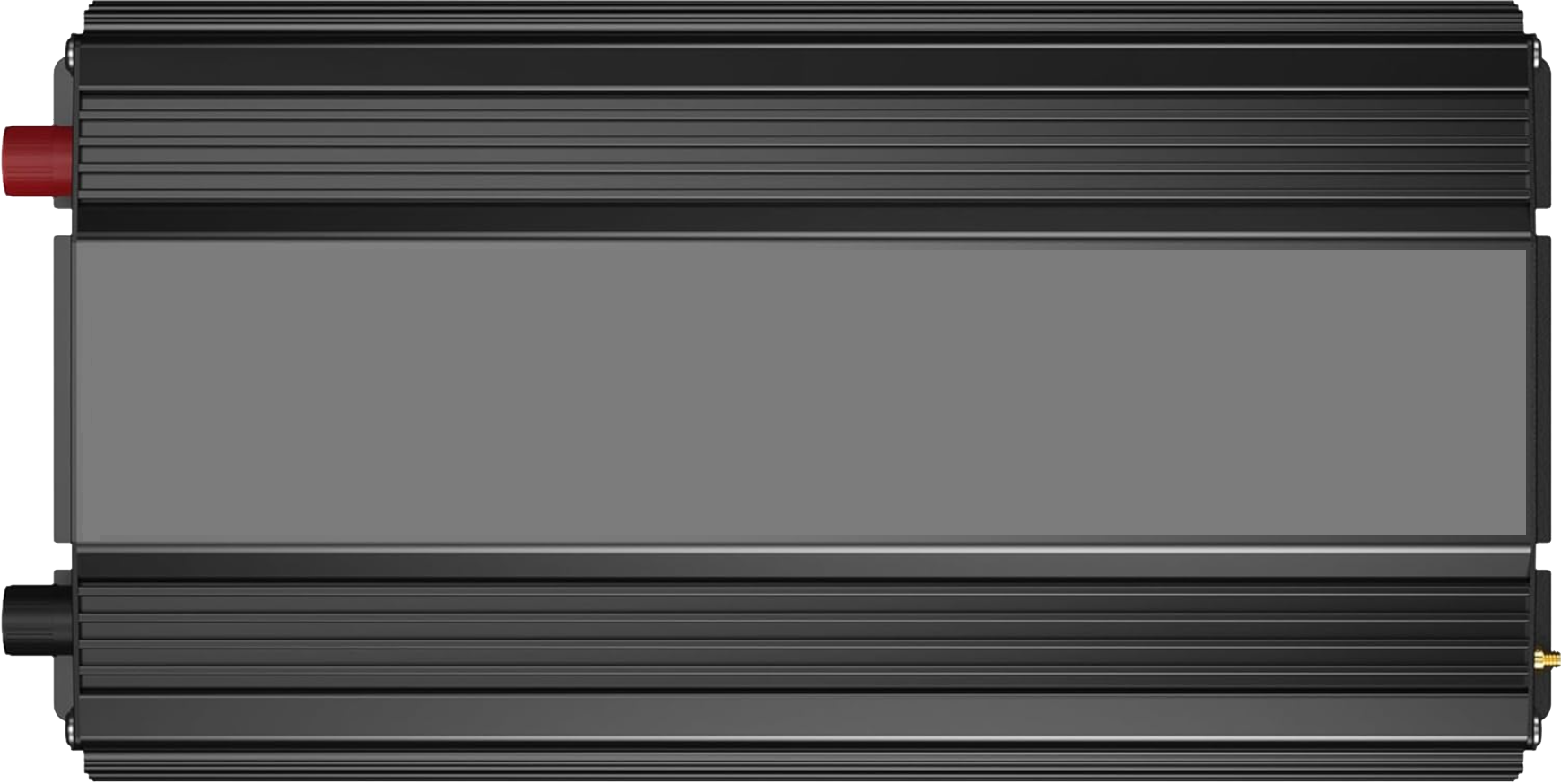
 Design with Power Inverter in Cirkit Designer
Design with Power Inverter in Cirkit DesignerIntroduction
The VOLTWORKS Store ETL UL458 12V DC to 220V AC 4000W Power Inverter is a high-performance electronic device designed to convert 12V DC power from sources such as batteries into 220V AC power. This enables the operation of standard AC appliances and devices in off-grid or mobile environments. With a robust 4000W power capacity, this inverter is ideal for powering a wide range of devices, from household appliances to industrial equipment.
Explore Projects Built with Power Inverter
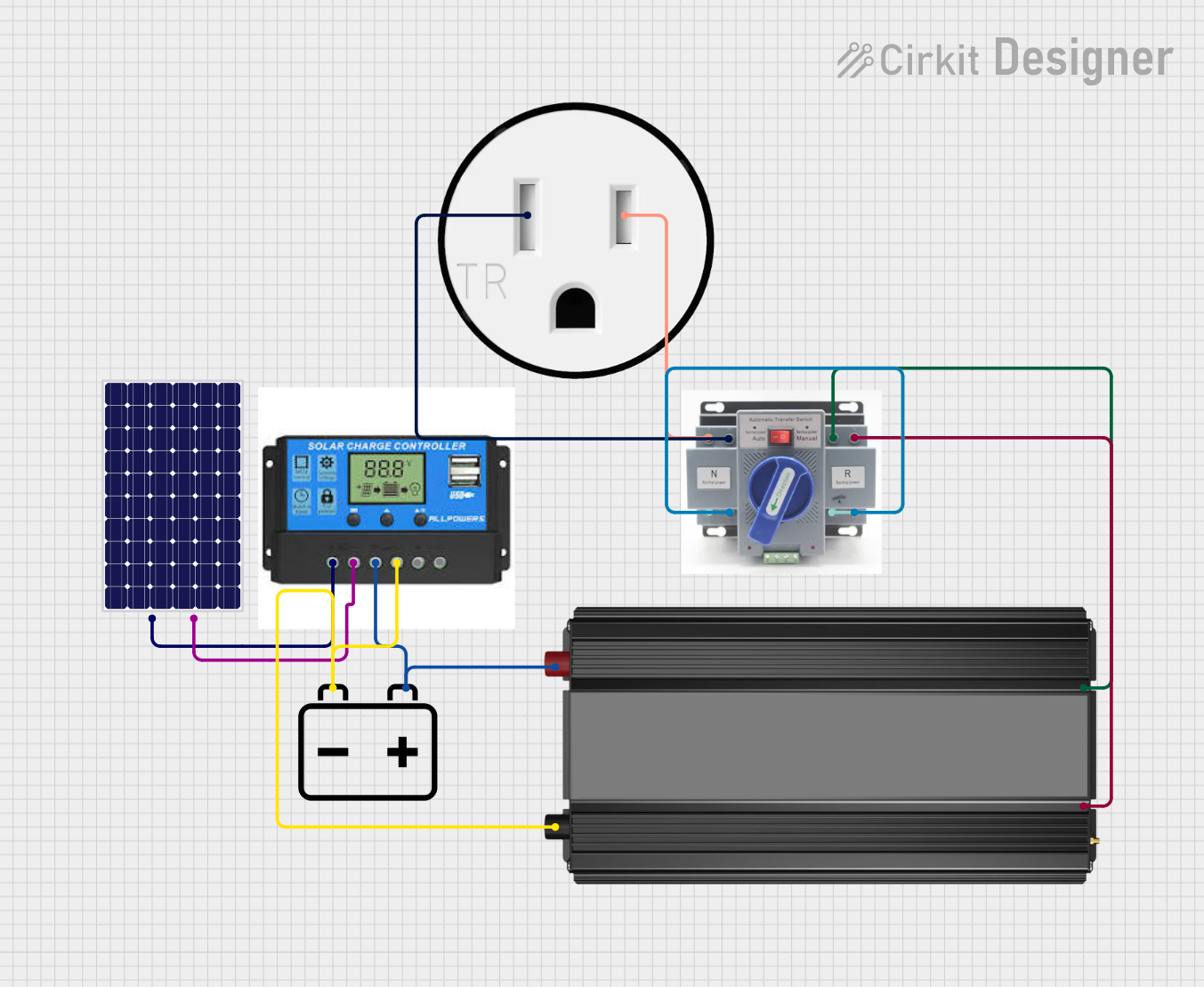
 Open Project in Cirkit Designer
Open Project in Cirkit Designer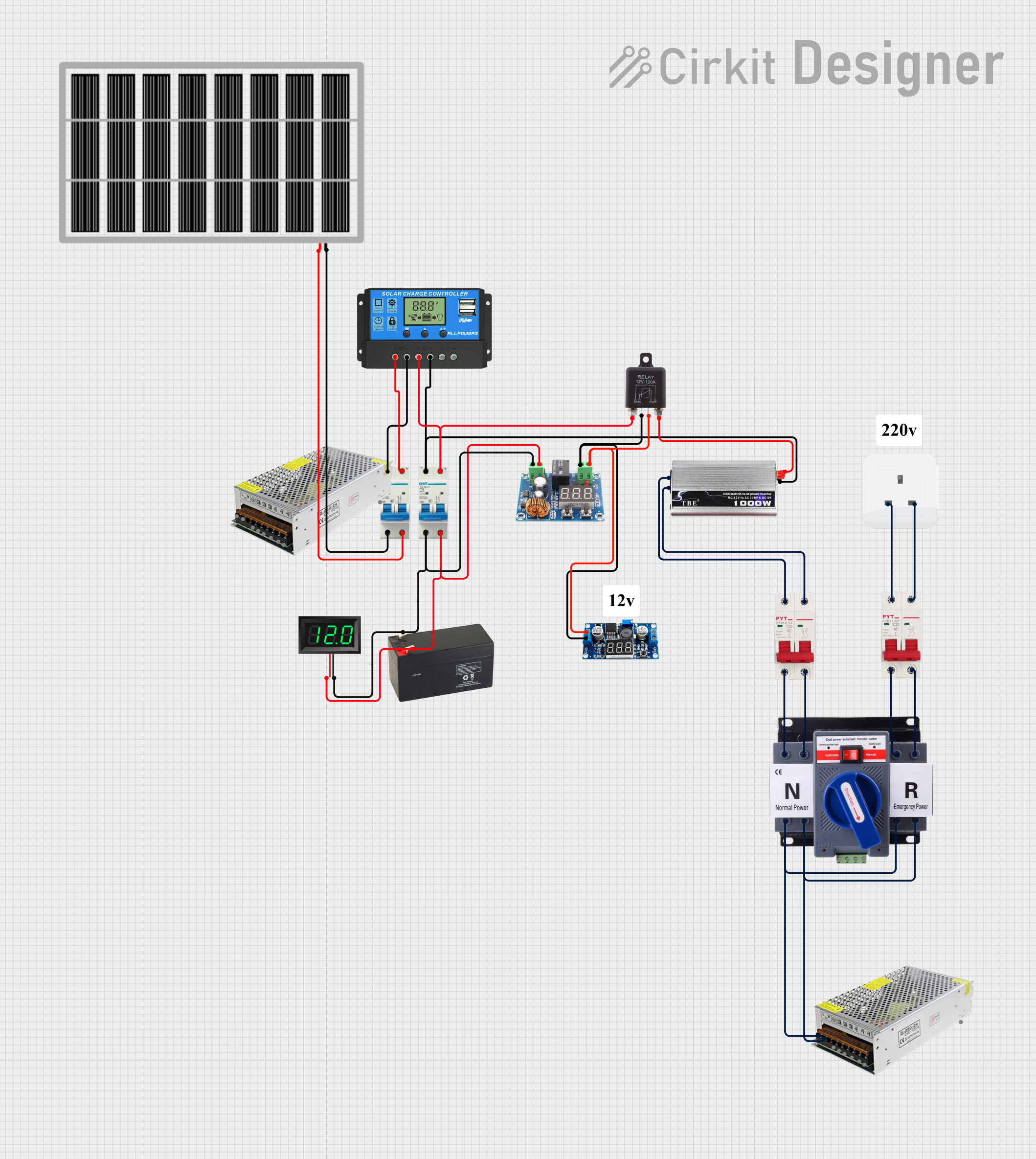
 Open Project in Cirkit Designer
Open Project in Cirkit Designer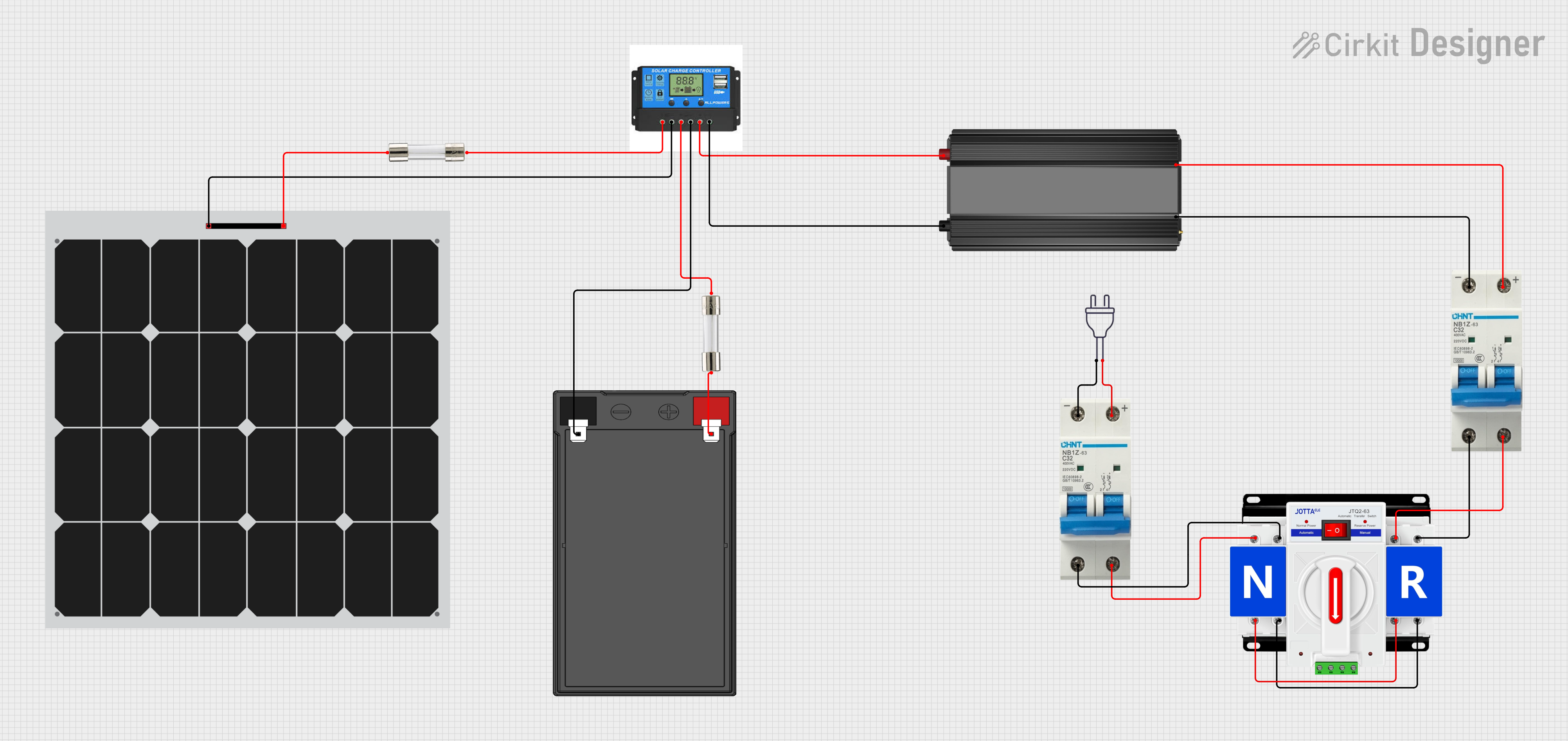
 Open Project in Cirkit Designer
Open Project in Cirkit Designer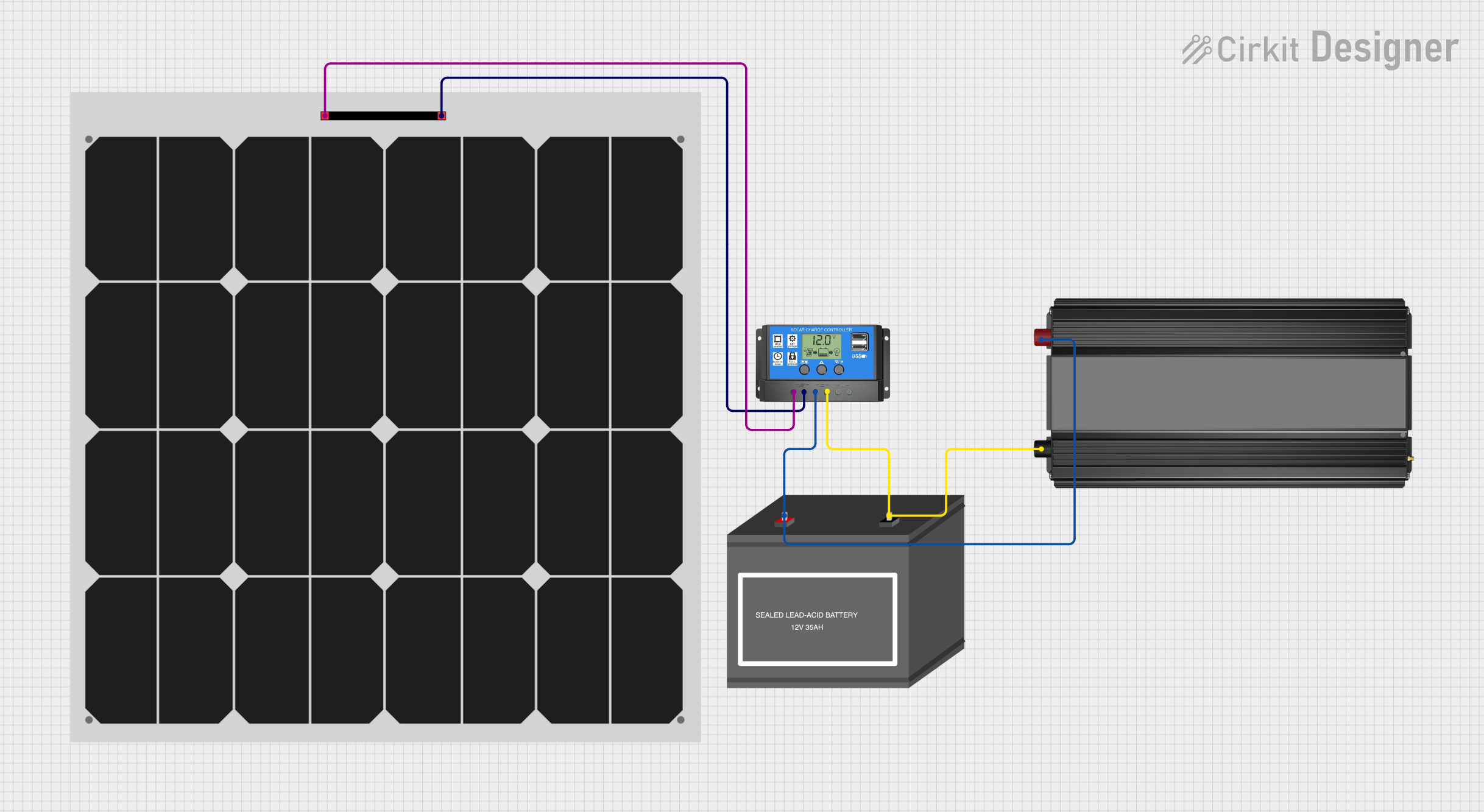
 Open Project in Cirkit Designer
Open Project in Cirkit DesignerExplore Projects Built with Power Inverter

 Open Project in Cirkit Designer
Open Project in Cirkit Designer
 Open Project in Cirkit Designer
Open Project in Cirkit Designer
 Open Project in Cirkit Designer
Open Project in Cirkit Designer
 Open Project in Cirkit Designer
Open Project in Cirkit DesignerCommon Applications and Use Cases
- Off-Grid Power Systems: Used in solar or wind energy setups to power AC devices.
- Recreational Vehicles (RVs): Provides AC power for appliances during travel or camping.
- Emergency Backup Power: Supplies electricity during power outages.
- Marine Applications: Powers AC devices on boats or yachts.
- Construction Sites: Operates tools and equipment in remote locations without grid access.
Technical Specifications
The following table outlines the key technical details of the ETL UL458 12V DC to 220V AC 4000W Power Inverter:
| Specification | Details |
|---|---|
| Input Voltage | 12V DC |
| Output Voltage | 220V AC ± 5% |
| Continuous Power | 4000W |
| Peak Power | 8000W |
| Output Waveform | Pure Sine Wave |
| Efficiency | ≥ 90% |
| Frequency | 50Hz ± 1% |
| No-Load Current Draw | < 1.5A |
| Protection Features | Overload, Overvoltage, Undervoltage, Overheat, Short Circuit, Reverse Polarity |
| Cooling | Intelligent temperature-controlled fan |
| Operating Temperature | -10°C to 40°C |
| Dimensions | 16.5 x 9.8 x 4.3 inches (L x W x H) |
| Weight | 10.5 lbs |
| Certifications | ETL UL458 |
Pin Configuration and Descriptions
The power inverter has the following key input and output connections:
| Pin/Port | Description |
|---|---|
| DC Input Terminals | Connect to a 12V DC power source (e.g., battery). Red = Positive, Black = Negative. |
| AC Output Sockets | Standard 220V AC outlets for connecting appliances or devices. |
| USB Ports | Provides 5V DC output for charging USB devices (e.g., phones, tablets). |
| Ground Terminal | Connect to the ground for safety and to reduce electrical noise. |
| Remote Control Port | Allows connection of a remote control for convenient operation. |
Usage Instructions
How to Use the Power Inverter in a Circuit
Connect the DC Input:
- Ensure the power source (e.g., battery) provides a stable 12V DC output.
- Use appropriately rated cables to connect the positive (red) and negative (black) terminals of the inverter to the battery.
- Tighten the connections securely to avoid loose contacts.
Ground the Inverter:
- Connect the ground terminal of the inverter to a proper earth ground to ensure safety and reduce electrical interference.
Connect AC Devices:
- Plug your AC appliances or devices into the inverter's 220V AC output sockets.
- Ensure the total power consumption of connected devices does not exceed 4000W.
Power On:
- Turn on the inverter using the power switch or remote control (if connected).
- Verify that the inverter's status indicators show normal operation.
Monitor Operation:
- Check the inverter's display (if available) for input voltage, output voltage, and load status.
- Ensure the cooling fan operates as needed to prevent overheating.
Important Considerations and Best Practices
- Battery Capacity: Use a battery with sufficient capacity to handle the inverter's power requirements. For example, a 12V battery with at least 300Ah is recommended for continuous operation at full load.
- Cable Sizing: Use thick, low-resistance cables to minimize voltage drop and heat generation. For a 4000W inverter, 2/0 AWG cables are recommended.
- Ventilation: Place the inverter in a well-ventilated area to ensure proper cooling. Avoid enclosing it in tight spaces.
- Load Management: Do not exceed the inverter's continuous power rating of 4000W. For devices with high startup currents (e.g., refrigerators), ensure the peak power of 8000W is not exceeded.
- Polarity Check: Double-check the polarity of the DC input connections to avoid damage to the inverter.
Arduino UNO Integration
While the power inverter itself is not directly controlled by an Arduino, it can be used in projects where the Arduino controls devices powered by the inverter. For example, an Arduino can monitor the inverter's input voltage and control a relay to disconnect the battery if the voltage drops too low.
Here is an example Arduino sketch for monitoring battery voltage:
// Arduino code to monitor battery voltage and disconnect load if voltage is too low
const int voltagePin = A0; // Analog pin connected to a voltage divider
const int relayPin = 7; // Digital pin connected to a relay module
const float voltageDividerRatio = 11.0; // Ratio of the voltage divider
const float lowVoltageThreshold = 11.0; // Low voltage cutoff (in volts)
void setup() {
pinMode(relayPin, OUTPUT);
digitalWrite(relayPin, HIGH); // Turn on the relay (connect load)
Serial.begin(9600);
}
void loop() {
int rawValue = analogRead(voltagePin); // Read the analog voltage
float batteryVoltage = (rawValue * 5.0 / 1023.0) * voltageDividerRatio;
Serial.print("Battery Voltage: ");
Serial.println(batteryVoltage);
if (batteryVoltage < lowVoltageThreshold) {
digitalWrite(relayPin, LOW); // Turn off the relay (disconnect load)
Serial.println("Low voltage detected! Load disconnected.");
} else {
digitalWrite(relayPin, HIGH); // Keep the relay on
}
delay(1000); // Wait for 1 second before the next reading
}
Note: Use a voltage divider to scale down the battery voltage to a safe level for the Arduino's analog input (0-5V).
Troubleshooting and FAQs
Common Issues and Solutions
| Issue | Possible Cause | Solution |
|---|---|---|
| Inverter does not turn on | Loose or incorrect DC input connections | Check and secure the DC input connections. Ensure correct polarity. |
| Overload protection triggers frequently | Connected load exceeds 4000W | Reduce the load to stay within the inverter's power rating. |
| Low voltage alarm sounds | Battery voltage is too low | Recharge the battery or use a higher-capacity battery. |
| Inverter overheats | Poor ventilation or high ambient temperature | Ensure proper ventilation and reduce the load if necessary. |
| No AC output | Faulty AC device or inverter malfunction | Test with a different AC device. Check the inverter's status indicators. |
FAQs
Can this inverter power sensitive electronics?
- Yes, the pure sine wave output is safe for sensitive devices like laptops and medical equipment.
What happens if I reverse the DC input polarity?
- The inverter has reverse polarity protection, but always double-check connections to avoid damage.
Can I use this inverter with a 24V battery?
- No, this model is designed specifically for 12V DC input. Using a 24V battery will damage the inverter.
How do I calculate the runtime of my battery with this inverter?
- Divide the battery's capacity (in watt-hours) by the total load power (in watts). For example, a 12V 300Ah battery provides 3600Wh (12V × 300Ah). If the load is 1000W, the runtime is approximately 3.6 hours (3600Wh ÷ 1000W).
By following this documentation, users can safely and effectively utilize the VOLTWORKS Store ETL UL458 12V DC to 220V AC 4000W Power Inverter for a variety of applications.